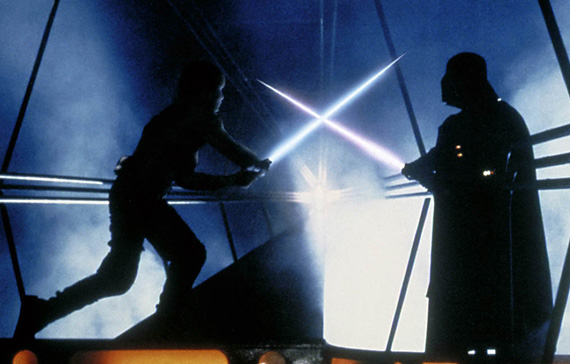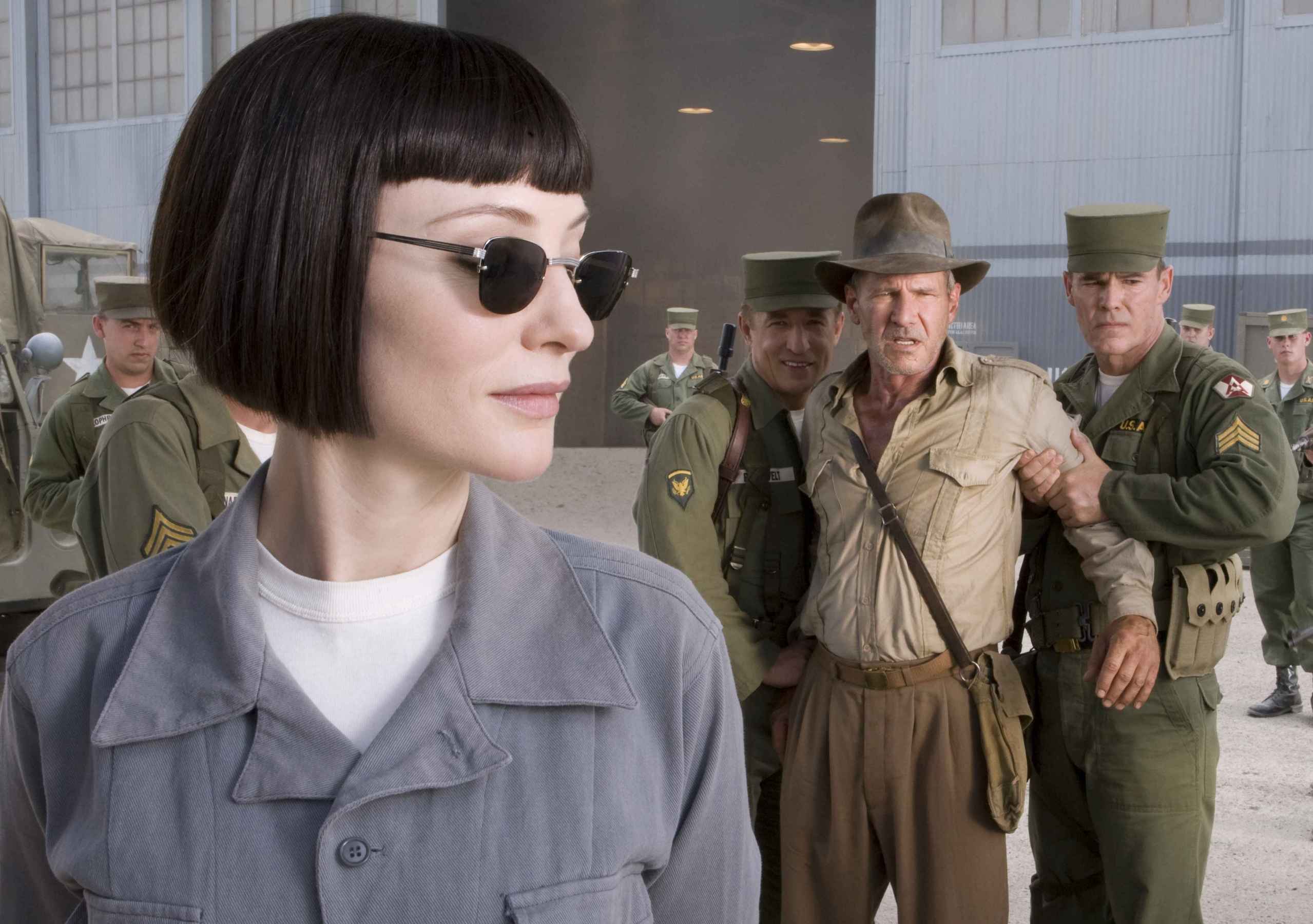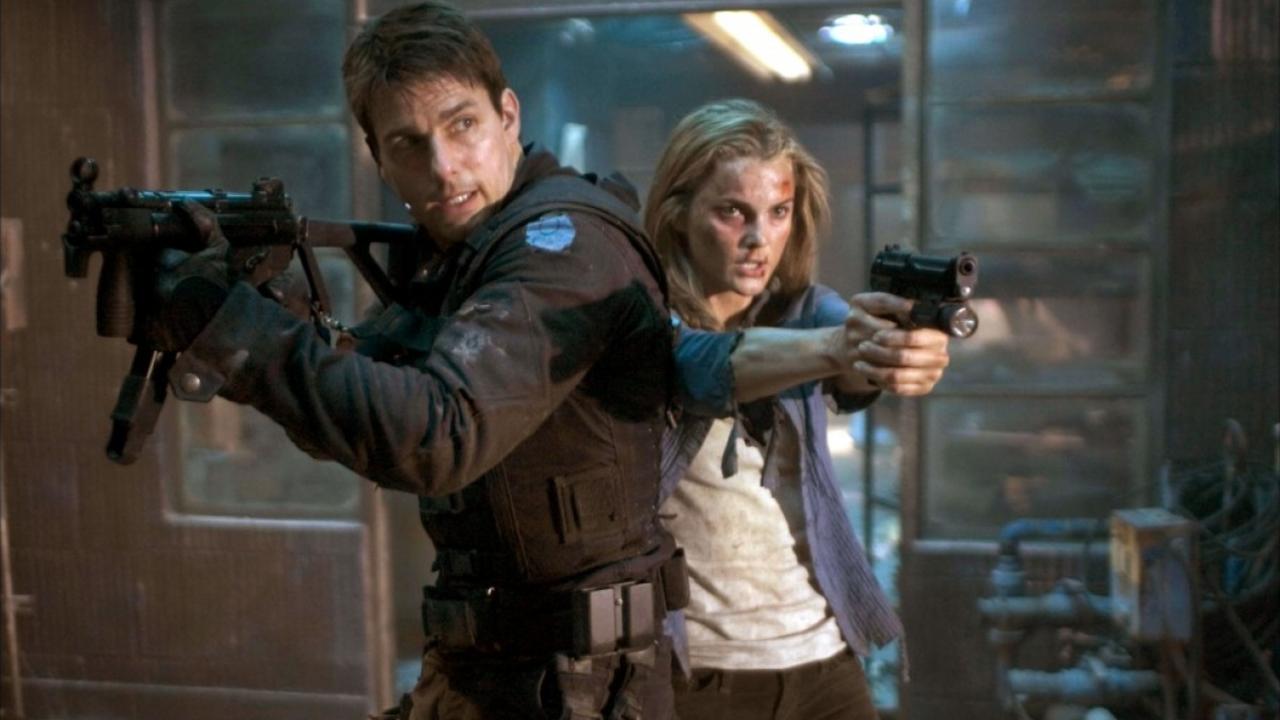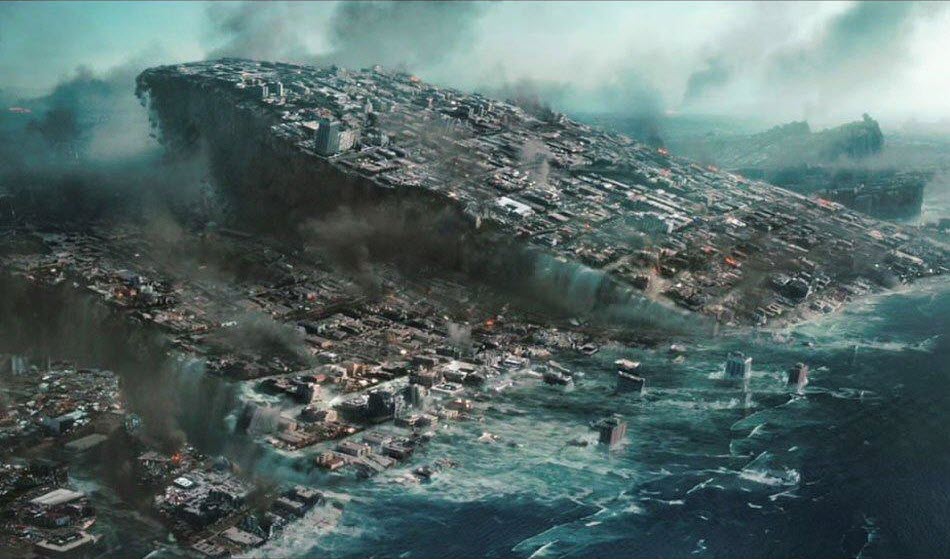5. Sunshine

“Sunshine” is an excellent movie. The sun is dying 50 years from now. Earth is getting colder and crops do not grow anymore. Life on Earth will cease to exist unless Icarus II accomplishes its mission.
The film begins with young physicist Robert Capa sending a message home on the verge of entering a region where communication becomes impossible. In a few minutes, he tries to make sense of the situation he is in: Icarus II is transporting a huge nuclear bomb intended to restore the sun. No one knows the fate of Icarus I, which failed to accomplish its mission after entering the non-communication zone.
Despite evident hardships, the mission is not suicidal; Capa ends his message on an uplifting tone, believing he will be back home in a few years. Things are more complicated than that, he soon finds out, as a surprising discovery leads to a chain of events that leaves Earth’s fate hanging in balance.
Contrary to common sense, the sun will not wither and fade as it uses up its fuel; it will become a red giant, a star so big it will engulf Earth. It is also highly unlikely that we would be able to produce a bomb with any meaningful power when compared to our star; the sun emits 9.192×1010 megatons of energy per second, 100 million times the strongest nuclear bomb ever made. None of these mistakes, however, stop this film from being a frightening experience.
4. Star Wars: Episode V – The Empire Strikes Back

Discussing scientific inaccuracies in a film where people can lift objects and control other people’s minds by using “the force” might seem ludicrous. Being one of the most popular film series ever made, however, makes Star Wars one of the most common targets for every sort of “mistakes in films” discussion, from film lists like this one to high school physics classes.
“The Empire Strikes Back” is the second film of the original series, and is famous for the “Luke, I’m your father” line, which has been parodied to exhaustion. It is set three years after the first episode. Despite having lost the Death Star, the Empire was able to expel the rebel alliance from their original base on Yavin IV. Led by Princess Leia, they set up a new base in Hoth, a remote ice planet, but their enemies are chasing them all over the galaxy.
While investigating a meteor impact, Luke is captured by a snow monster and, despite managing to escape, has to face the planet’s incredibly cold climate completely unprepared. The ghost of Obi-Wan Kenobi appears and instructs him to go to Dagobah to train under Yoda. Almost by miracle, Luke is saved by Han Solo, but they soon find themselves in even greater peril, as the meteor was actually one of the Empire’s probe droids and the planet faces a full scale invasion.
Some of the inaccuracies in the Star Wars films are clichés in sci-fi films. Those include slow moving laser beams, explosions, and noise in outer space. To sacrifice those elements for more realism would not make sense, considering the abundance of fantastic elements in this film. Some other mistakes are harder to notice, but they might put off viewers more easily. First, the planets in Star Wars all have the same gravity and breathable atmosphere.
Second, at some point in the film, the Millennium Falcon loses its capacity to travel in hyperspace, but is able to arrive at Cloud Planet in what seems like minutes. In fact, this would take many years. A one-way trip to Mars from Earth, for instance, takes about nine months. Finally, a spaceship battle would not be like aerial dogfighting; there would be no pursuits with breathtaking maneuvering, as wings do not work without air.
3. Indiana Jones and the Kingdom of the Crystal Skull

The Russians (who else?) capture Indiana Jones and his sidekick Mac McHale and take them to a certain “warehouse 51”, where he is forced to look for a crate left there many years ago. Indiana is able to find it thanks to the hyper-magnetic properties of its content.
He eventually escapes, but finds himself in the middle of a nuclear test. He manages to survive, but loses his job due to suspicions he might be working for the Soviets. Upon hearing about a similar artifact in Peru, Indiana gathers his team together and starts searching for it. His enemies, however, will do everything they can to reach it first.
As with Star Wars, debating scientific inaccuracies in any Indiana Jones film does not make a lot of sense. In the “Kingdom of the Crystal Skull”, for instance, Indiana takes a telepathic skull to an Inca temple inhabited by aliens made of crystal. Having said that, some of the scenes in the series’ fourth installment are, quite frankly, preposterous.
The most famous is the one where Indiana survives a nuclear blast by hiding behind a refrigerator. Although the lead in it could protect him from the radiation, it would not protect him from the heat or the pressure wave, which would certainly kill him.
2. Mission Impossible III

Ethan Hunt is back from retirement to rescue his former protégée, Lindsey Farris, who was captured while investigating arms dealer Owen Davian. The mission is a success, but while returning to base, Ethan discovers Lindsey has an explosive device implanted on her head. Despite their efforts, it goes off, killing her. Following the clues she hid before dying, Ethan unravels a gigantic conspiracy centered on a mysterious object called the Rabbit’s Foot.
“Mission: Impossible III” is a typical McGuffin action thriller. Its plotline holds together pretty well, and its action scenes are good. Overall, it is an entertaining picture that tends to follow the maxim “you do not change a winning team.”
As the title indicates, many scenes in this film are indeed impossible. My favorite is the ending scene, where Ethan uses electrical cables to improvise a defibrillator and gives himself an electric shock to deactivate an explosive device in his head. That would not work for a number of reasons. First, he would have to apply the shock to his head, and not to his chest. The way it is done, the electrical current would go from one cable to the other through his chest, and not near the brain.
Even if it did pass through the brain, then it is hard to imagine how it would be strong enough to burn the bomb’s circuitry but leave the brain intact. Moreover, what is the likelihood of two random electrical cables working just like a defibrillator? Nevertheless, “Mission: Impossible III” is a good, if exaggerated action film for those who just want to sit on a couch, eat popcorn, and watch things explode.
1. 2012

Many Internet sources state that NASA elected “2012” the most absurd sci-fi film ever made. This is not entirely true; despite releasing many reports discrediting the 2012 doomsday scare and explaining the holes in each of the possible doomsday scenarios, NASA never published a film list or made any official statements regarding the film “2012”. Nevertheless, had this election taken place, it would not be surprising if “2012” won it.
In 2009, geologist Adrian Helmsley goes to India to meet astrophysicist Satnam Surtani. Surtani explains that he’s detected an unusually high amount of neutrinos entering the Earth’s atmosphere, and that those neutrinos are somehow heating up the Earth’s inner core.
The heating will eventually lead to massive tectonic shifts, earthquakes, volcano eruptions and tsunamis that might wipe out the entire human race. World leaders are immediately informed and decide not to disclose the information, devising a plan according to which nine gigantic arks are to be built in China, financed by the sale of tickets to the world elites.
Fast forward to 2012. During a camping trip with his sons, science fiction writer Jackson Curtis meets Charlie Frost, who believes the end of the world is coming soon. Meanwhile, Adrian learns the catastrophe is about to happen, much earlier than expected. Led by different ways to believe in Earth’s imminent collapse, both men will struggle against time to save their loved ones, themselves, and the future of humankind.
“2012” relies too much on its impressive visual effects of disaster scenes, lacking a good storyline to justify its 158-minute running time. It is probably one of the best examples of making nonsense sound like actual science. Right at the beginning, we hear that “the neutrinos have mutated, now they are behaving like microwaves.” That statement could be a very clever joke on the particle-wave duality, had it made any sense at all.
Fundamental physical particles are not like viruses; they do not mutate and begin behaving differently all of a sudden. Even if they did mutate, one of the defining characteristic of a neutrino is being electrically neutral, whereas microwaves are electromagnetic radiation and only interact with charged particles. From there, believe me, it gets worse.
Author Bio: Henrique Fanini Leite is an engineer, currently working for the Brazilian Space Program. He started writing professionally during university. Since then, he has published a book and short stories on-line, in anthologies and magazines.